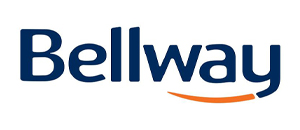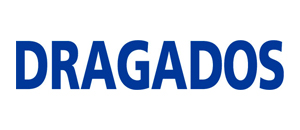People is our most important value in blu-3 and we want to make sure we keep all our colleagues safe. Safe working in fast-paced changing environments, with potentially dangerous machinery and equipment can be a challenge. However, imagine a world where you could not just monitor incidents but predict and prevent them by using data – enabling cost savings and keeping the workforce healthy and safe.
That vision is almost becoming a reality. blu-3 is working alongside a leading team of academics and construction companies (BAM Nuttall, Multiplex, John Sisk and Wood) to find a footing for using leading indicators to prevent injuries at work.
Leading indicators are measures linked to the proactive and preventative things we can do to keep people safe. These include providing obvious measures like inspections and Leadership Tours, through to less obvious ones, for example, promoting healthy lifestyles or looking after employees’ mental health.
The hope for this new initiative is that it will help to avoid some of the accidents that occur in the construction industry. As a high-risk industry, the construction sector sees 39 fatalities each year, 61,000 non-fatal injuries and 2.1 million working days lost due to work-related injuries or ill health, resulting in a total cost of around £1.2 billion to the UK economy.
A new way of operating
HSEQ Director at blu-3, Shane Fay, says “on-site safety has come a long way in the industry over recent years and we are seeing more open and honest discussions about what can potentially be hazardous, while continually learning lessons from accidents and incidents. The statistics clearly show that there remains a long way to go before risk is reduced to zero, but this new initiative is a great start.”
According to leading data scientist Steven Naylor, the next step is to prevent things going wrong in the first place: “If by getting the construction industry to be more proactive in how they manage risks, we can achieve even a 5% reduction in these metrics, it would mean two lives saved every year, over 3,000 serious injuries and over 100,000 lost workdays avoided and cost savings to the UK economy of the order of £50 million.”
The construction industry has long understood the link between proactive measures and improved safety but proving this link with facts and data, rather than empirical evidence, has been challenging. This has led to the development of the ‘Leading Indicators’ project.
Naylor further explains that “Using leading indicators means being more proactive and understanding the processes that lead to things going wrong, not just reacting when they do. We’re making a case for developing safety processes based on what we do, rather than what we don’t.”
The project involves sophisticated software to show the causal link between Leading Indicators and better safety and wellbeing at work. It will collect data on accidents, incidents, and near misses to bring valuable insights into the root causes of hazards. This will then enable the construction industry to develop preventative measures such as training, communications, health and safety management practices and critical lagging indicators such as accident frequency rates and lost time injuries.
Working in phases
Like every project designed to effect real change, the Leading Indicators project is a multi-stage project, consisting of three phases.
Phase 1 is focused on building an evidence base to use as a framework.
Phase 2 involves testing the framework and seeing how to apply it in real-time. This means drawing on data held in the HSE’s history log of accident and incident reports to find the areas that most need focus.
The first part of Phase 2 involves blu-3 working alongside BAM Nuttall, Multiplex, John Sisk and Wood to document the range of data practices currently being used by contractors.
This workshop enables the research team to understand how projects are managed day to day, and the key challenges. They also use readily available data from the preconstruction stage of a project, which is typically more challenging to obtain but provides insights that will help the new, proactive processes work in the real-world, complex construction workplace.
Phase 3 will involve using automated data-gathering tools such as text-mining and artificial intelligence to help construction companies better use the data they gather. To do this, the businesses shared samples of routine health and safety data generated on their projects, such as incident reports and the findings of inspection and audit reports, as well as project observations.
This data, along with data already held by HSE, forms a solid foundation for developing new analytic tools and techniques that the industry can use on their data in the future.
A new dawn
Having more proactive and more data-driven safety management processes will mean that contractors have:
- Measures and controls of health and safety performance available in real-time (or nearly)
- End-to-end processes that start with the raw data being generated and end with automatic collation and reporting
- Measures that are more directly linked to agreed actions include documented risk hotspots, triggering targeted inspections
Shane goes on to say: “The hard work being carried out in this project will enable the industry to move forward into a much safer working environment that workers can feel more secure when carrying out their day-to-day duties.
“Delivering training like the Choose our Futur-3 and Being blu-3 culture to all our colleagues can be an industry game-changer and prevent incidents before they happen. Especially when we focus on building better HABITS that we can make sure TIME Vs RISK incidents are something that blu-3 can eliminate.”
If you’d like to be part of this drive for more Pro-Active safety that holds the promise of preventing avoidable death and injury and unnecessary cost to industry and the economy, contact shane.fay@blu-3.co.uk.






















































